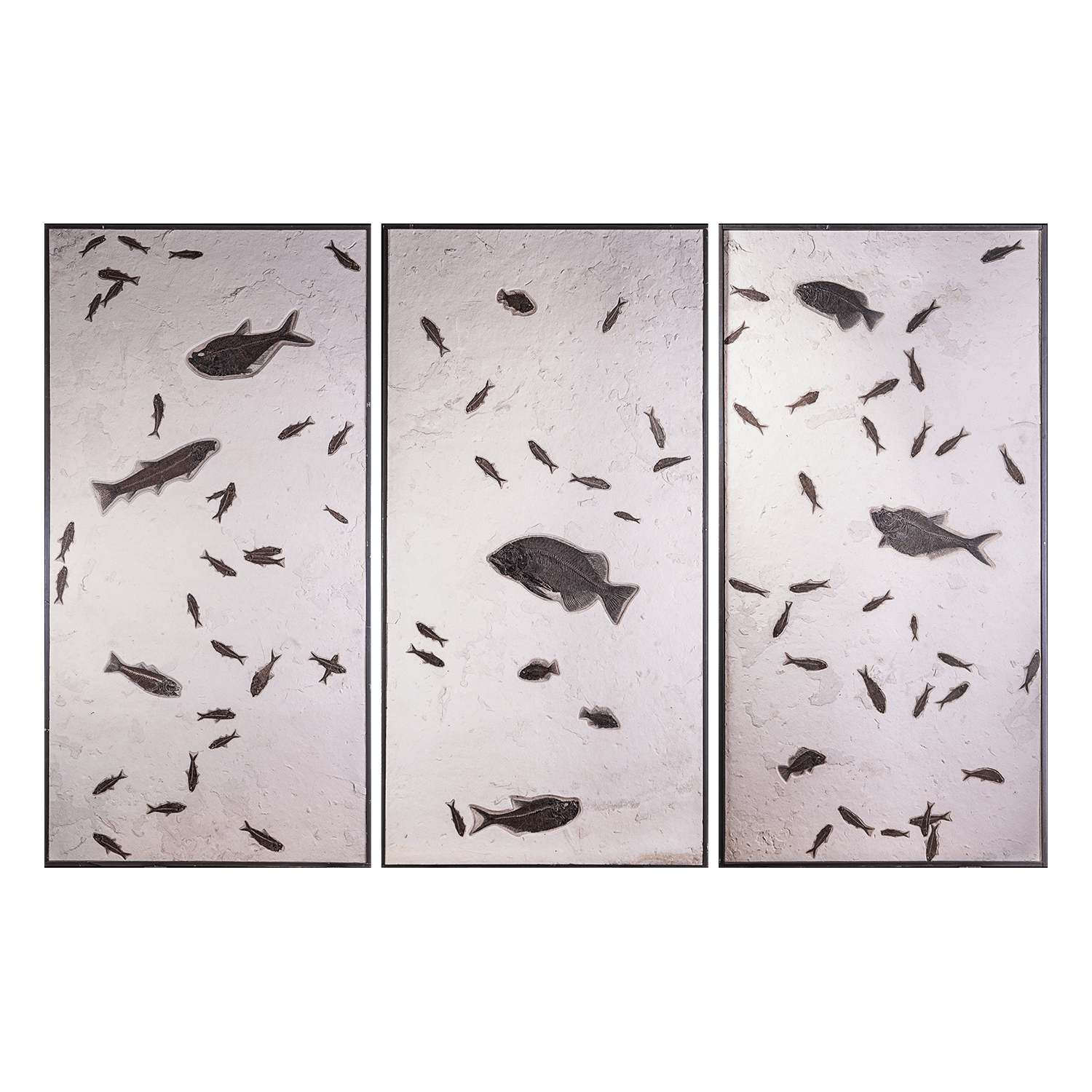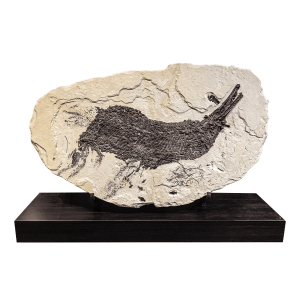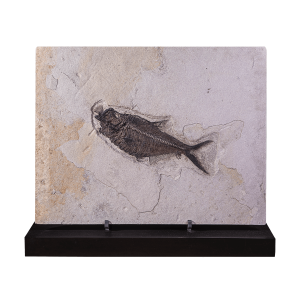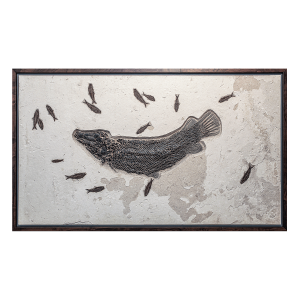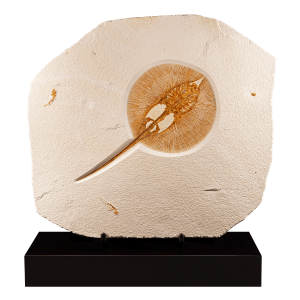Aquarium Triptych Mural
Perfectly preserved fish, as if swimming peacefully through the ancient lake. This abundant fossil aquarium triptych mural offers a wonderful variety of six ancient fishes and over 50 individual specimens. Found in the famed Green River Formation, known for its wealth of vertebrate fossils, this piece was skillfully prepared, preserving the delicate fins, vertebras, scales and teeth in great detail. A beautiful contrast of the all original, chocolate brown fish against the warm cream matrix are displayed in custom walnut frames.
Ranging from four to 22 inches long, the predators Diplomystus, — an extinct herring – Phareodus, – an extinct bony tongue fish – and Mioplosus – an extinct perch – seem to swim among a school of Knightia and a scattering of Priscacara – extinct perch. A rare Notogoneous – an extinct bottom feeder – with an artfully articulated spine completes the variety of Green River fishes.
The stunning triptych captures the breathtaking movement of ancient lakes.
As the Rocky Mountains formed, three large lakes formed in basins across 60,000 square miles of Wyoming, known today as the Green River Formation. In the 1840s, the first reports of fossils in the area were recorded. Today the formation is famous for its abundant variety of fishes, insects, and plants preserved in finely laminated limestones and shales.
Private negotiation
Details
| Specimen | Phareodus sp. – Diplomystus sp. – Priscacara sp. – Knightia sp. – Notogoneus sp. – Mioplosus sp. |
|---|---|
| Geological Period | Eocene |
| Age | 55 Million Years Old |
| Origin | Wyoming (USA) |
| Dimensions | L 144 x D 5 x H 96 in (L 360 x D 13 x H 244 cm) |
| Weight | 1,653 lb (750 kg) |
Diplomystus are one of the most common genera across the Green River Formation. The large fish likely swam alone, and its morphology and shape of the mouth suggest it hunted near the water’s surface. Due to its thin scales, they are rarely well preserved and must be prepared by the most skillful restoration artists.
Knightia was one of the most abundant fish in the Green River foundation, swimming in large schools and feeding on plankton and algae.
Mioplosus are predators distinguished by a double dorsal fin and believed to feed on smaller fish near the lake shore.
Notogoneous were scarcely found and believed to primarily inhabit tributaries. Averaging 16 – 20 inches in length with ray fins, the shape of the mouth indicates these fish were bottom feeders.
Phareodus a rare, large predator reaching up to 32 inches in length. Distinguished by sharp teeth, powerful jaws, and beautiful fins, the pectoral fins could grow to a third of its body length. Some specimens are found with well-preserved scales.
Priscacara are distinguished from other Green River fish by their disc shape and have not been identified outside of the Eocene geologic period. A smaller fish that sometimes grew up to 16 inches long, it was believed to swim in schools feeding on gastropods and crustaceans. They evolved spines, thought to defend against predators like the Diplomystus.
Related Articles
Please contact us at Geoworld USA
Phone : +1 520 884 4867
Mail : gallery@geoworldusa.com

